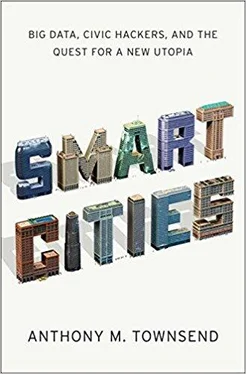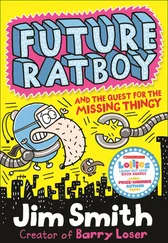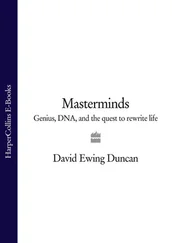To date, the few transdisciplinarians working on smart cities are mostly technologists or scientists dabbling in urbanism. But as a discipline, urban planning is probably better prepared to systematically cross-train its own students from the other direction. That’s because planning is already connected to a hodgepodge of disciplines that offer insights on the city: engineering, economics, sociology, geography, political science, law, and public finance. Expanding its small existing connection to informatics would be easy.
The need for a broader perspective on smart systems is so clear that even those outside the field see it. Writing about the future of the ICT4D movement in Boston Review , Evgeny Morozov argued:
In short, we need to be realistic, holistic, and attentive to context. Why haven’t we been so far? Part of the problem seems to lie in the public’s penchant for fetishizing the engineer as the ultimate savior, as if superb knowledge of technology could ever make up for ignorance of local norms, customs, and regulations.... Non-technologists may be more successful in identifying the shortcomings of technologies in given contexts. They may be better equipped to foresee how proposed technological solutions complement or compete with other available non-technological solutions as well as to anticipate the political and institutional backlash that can result from choices of technology.38
These are precisely the problem-solving approaches that urban planners use every day.
Yet even as a company like IBM boasted about a track record of two thousand smart-city engagements in 2011, it hired just a single urban planner—as far as I can ascertain, the company’s first.
Think Long-Term in Real Time
At a conference in Singapore in early 2012, New York’s Michael Bloomberg lamented that “Social media is going to make it even more difficult to make long-term investments” in cities.39 As mayor, Bloomberg had pushed city agencies hard to engage the public, creating over two hundred social-media channels. But when citizens used social networks to talk among themselves, the conversation snowballed into daily referenda on his administration.
Figuring out how to harness real-time data and media to think about long-term challenges is one of the most important opportunities we must exploit. But throughout history, planners have struggled to create durable visions. Cities don’t stand still, and often change in unpredictable ways. Italo Calvino captured the challenge in his novel Invisible Cities :
In the center of Fedora, that gray stone metropolis, stands a metal building with a crystal globe in every room. Looking into each globe, you see a blue city, the model of a different Fedora. These are the forms the city could have taken if, for one reason or another, it had not become what we see today. In every age someone, looking at Fedora as it was, imagined a very different way of making it the ideal city, but while he constructed his miniature model, Fedora was already no longer the same as before, and what had been until yesterday a possible future became only a toy in a glass globe.40
In smart cities static visions will be even less durable, as both reality and our models of it change second-by-second.
If city planning is to keep up, it needs to become more of an agile, fluid process than the semi-decennial slog it is today in most cities. Michael Joroff, who studies planning and development at MIT, argues that “planning is going to be more iterative than in the past. Master plans will give way to master strategies.”41 In his view, these new visions will combine fixed, predictable elements along with placeholders that will be fleshed out later. This approach allows plans to be updated frequently to reflect changes in society, economy, and environment. More importantly, it creates an opportunity for the torrents of data produced by smart systems to inform those tweaks. Smart-city boosters herald big data’s value in prediction, but in the near-term it will be far more valuable in merely decoding the detail of how past decisions actually changed the city. Planners will still make judgment calls, but they will be better informed about potential outcomes. For instance, when New York City closed Times Square to vehicles during a pedestrianization campaign, it used GPS data from taxis to both predict and verify changes to traffic patterns in the surrounding area.42 IBM’s Guru Banavar, who led the company’s work on the Rio Intelligent Operations Center, sees a “feedback loop between the planning and operations of a city... the day-to-day activities and day-to-day successes and failures ... can provide information historically about how the next round of planning ought to be done.”43 As Joroff explains, “Big data will inform strategy on a macro scale. We will better know about conditions and consequences of policies and actions. Ignorance will no longer be a condition or an excuse. If the political will is there, decisions and deals will be forced to be transparent and accountable.”
By providing new avenues to quickly craft hacks that used to require major investment, smart technology will blur the day-to-day management and the long-term planning of cities. Instead of building a new bridge, you might use a model calibrated by high-resolution sensor readings to rejigger signals and tolls to smooth out the flow of traffic. The ability to reprogram instead of rebuild, and evaluate the results immediately through sensors, will allow more experimentation with “soft fixes” and iterative design. It’s easy to imagine new cities and neighborhoods where infrastructure and activities are moved around months or even years after they are initially placed, in response to observed patterns of use. Smart technologies could accelerate the growing array of tactical urban interventions and pop-up installations—from food trucks and temporary parks to technology incubators and farmers’ markets built inside shipping containers. Much like Cedric Price’s Generator , the ability to redesign the city on the fly will challenge architects and urban designers to come up with more flexible structures.
At the same time, however, real-time data will be used by citizens to make chronic problems more visible, creating new pressure for long-term fixes. I’m thinking here of dashboard visualizations that are being built on top of real-time open transit data such as “How Fucked is the Orange Line?” which provides up-to-the-minute reminders of delays in Boston’s transit system, or “How’s Business?” which presents charts of four economic indicators for the city of Chicago (new business licenses, unemployment, building permits for new construction, and foreclosures) alongside a colored summary label—green for “turning around,” red for “not looking good,” orange for “been better.”
Smart technology will also encourage people to engage in local planning debates by highlighting big-picture issues. Neighborhood dashboards that provide ambient information on public displays placed in local shops could visualize larger patterns of change and how they relate to upcoming decisions, much as the Boston transit and Chicago economy examples do. Is there a pattern of gentrification on this block visible in recent building permits? How will a proposed project impact traffic, and what does that mean for pedestrian safety on this corner ? Or you might receive a pop-up message as you walk past a proposed redevelopment site, prompting you to weigh in on the latest plans.
Public planning organizations must change profoundly to effectively marry the real-time with the long-term and close the gap on participatory planning. Frank Hebbert works for Open Plans, an advocacy and consulting group that develops open-source technology for cities. When New York City launched its bike-sharing program in 2011, Hebbert led the development of a Web app that allowed citizens to suggest locations for station sites. The public response was massive, yet a lack of transparency made it unclear if or how the transportation planners considered any of the input.
Читать дальше












